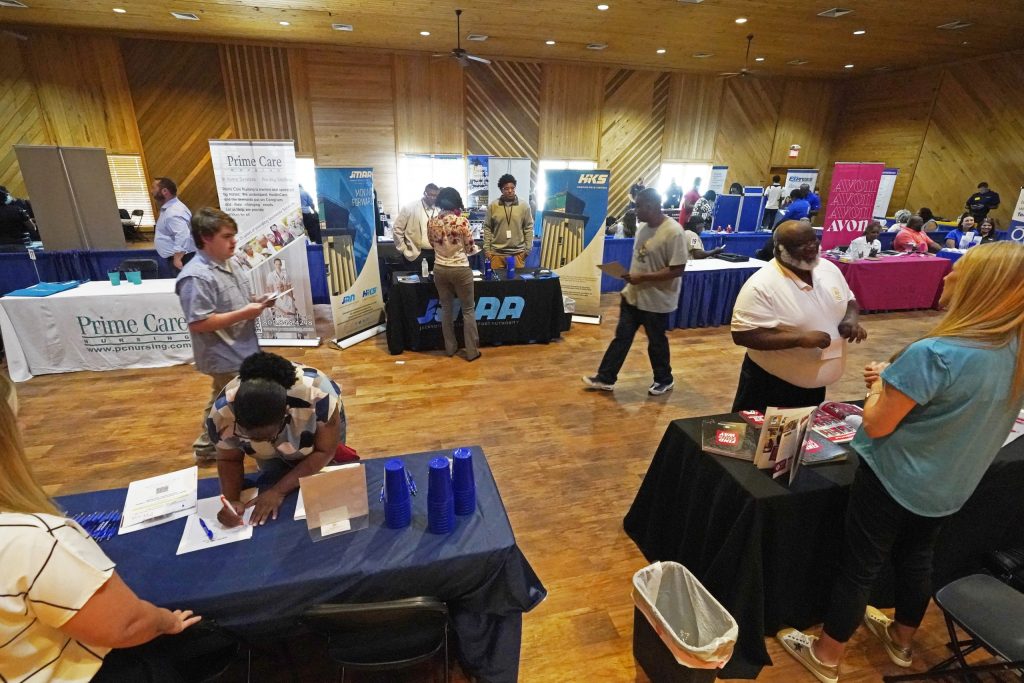Mississippi has the lowest labor force participation rate in the nation, and it’s impacting women and their families.
A recent report by the nonprofit Empower Mississippi found the state’s labor force participation rate – the percentage of working-age people who have jobs or are looking for jobs – is 53.9%. This is despite record economic growth and low unemployment.
The report found that the most important factors in labor force participation were education, age, gender and race.
Men have a higher labor force participation rate than women, 59.8% and 48.5%, respectively. This is despite there being more working-age women than men, and women’s and men’s labor force participation rates declining at similar levels.
Matt Williams from the Mississippi Low-Income Child Care Initiative said the lack of affordable child care, lack of time and money for education and training, and low wages are barriers for women in the workforce.
With Mississippi having the nation’s highest number of single mom-headed households – 42% with 80% of them led by single moms – .Williams also emphasized the importance of policies that uplifted single mothers economically.
“What’s not happening is we’re not connecting families headed by moms to higher wage work,” he said.
But the Empower report’s focus on gender as a factor in the state’s low labor participation rate needs context, he said..
“…When we look at labor force participation for moms, for women with children in Mississippi, what we see is that it is really high relative to other categories and subcategories of the population,” he said.
The Committee for Economic Development of The Conference Board found that Mississippi women with children between the ages of 18 and 54 have a higher labor force participation rate than childless women in the same age group.
Mississippi mothers with children ages 5 to 14 had a labor force participation rate of just over 77%. For mothers with kids under 14, it is 73%. Two-thirds of those women are married. For childless women, it is 68.5%.
State Economist Corey Miller. Miller said low educational attainment at high school and college levels and high rates of disability and incarceration also are major issues with labor force participation.
Empower Mississippi commissioned the National Strategic Planning & Analysis Research Center to conduct the quantitative research, which interviewed over 50 stakeholders, including legislators, professors and business leaders.
Miller was one of those interviewed. Like Williams, he said the lack of affordable childcare is a major issue for women in and out of the workforce. Another big overall challenge, he said, is bringing in companies that can bring jobs to the state.
“You kind of get a chicken and egg problem,” he said. “Can you get companies that want to hire college-educated workers to come to the state if you don’t have a big enough population of that? But at the same time, if you get a population educated with college degrees, how do you get them to stay in the state if they don’t have the job opportunities that they’re looking for?”
He believes having more remote work opportunities could be a solution. “It has the potential to increase labor force participation because it allows more flexibility, particularly for women who may have children at home,” he said.
He also pointed out the work being done to improve training and education such as AccelerateMS and the state’s workforce development agency.
Rebekah Staples, a fellow at Empower Mississippi, said this report was the first. An interim report is coming out next year that looks deeper into the issues raised in the first.
“The end goal is to be helpful and study the issues that policymakers want to look at so that perhaps they can use some of this data to act on,” she said.
In June, Lt. Gov. Hosemann announced the establishment of two Senate study committees. The Labor Force Participation Study Group is looking at why the labor force participation rate is so low. The Study Group on Women, Children, and Families, originally created in 2022, will address problems like women’s healthcare, access to childcare, the foster care system and more.
The findings from the original study group inspired the law to provide presumptive Medicaid eligibility to pregnant women.
In a statement, Hosemann expects Empower Mississippi to testify for the Labor Force Participation Study Group, and said that the data would intersect with the other study group.
“When labor force participation increases, the entire state wins — we are more stable, healthier, and more likely to contribute to our families and communities. Supporting women who may need help with issues like childcare in order to go to school or get a job is critical to these efforts,” he said.
Comments and recommendations for the study groups can be sent to LaborStudyGroup@senate.ms.gov and WCPStudyGroup@senate.ms.gov. Empower Mississippi is taking comments about it’s report at research@empowerms.org.
The post Mississippi has nation’s lowest workforce participation rate, report shows appeared first on Mississippi Today.

